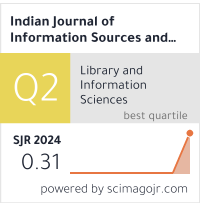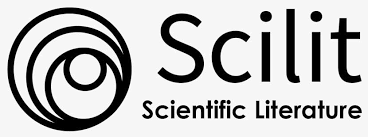Perception of WhatsApp Usage among Students of College of Excellence: A Case Study
DOI:
https://doi.org/10.51983/ijiss.2018.8.1.499Keywords:
WhatsApp, Perception on WhatsApp, College of Excellence, Educational purposes, Social Networking SitesAbstract
This paper has analysed the perception of WhatsApp usage among students of a College of Excellence. The objective of this study is to know the perception of the students towards WhatsApp. To carry out this study a questionnaire was used as research instrument to gather data. A total of 100 questionnaires were distributed among the students and 80 completed questionnaires were received. The response rate was 80% which is considered as very effective. The result shows that WhatsApp is a vital tool of communication used mainly for one to one communication. The results showed that participants had access to smart phones for WhatsApp. The use of WhatsApp was common among participants. Students use WhatsApp for personal and social purposes on a daily basis. The participants perceived the integration of WhatsApp into their education to be easy, fun, and useful. They had positive feelings and intentions about using WhatsApp in their formal learning if it is introduced.
References
Awada, G. (2016). Effect of WhatsApp on Critique Writing Proficiency and Perceptions toward Learning. Cogent Education, 3(1), 2-18.
Statista. (2017). Number of monthly active WhatsApp users worldwide from April 2013 to January 2017 (in millions). Retrieved June 8, 2017, from https://www.statista.com/statistics/260819/numberof-monthly-active-whatsapp-users/43
Barhoumi, C. (2015). The Effectiveness of WhatsApp Mobile Learning Activities Guided by Activity Theory on Students’ Knowledge Management. Contemporary Educational Technology, 6(3), 221-238.
Stefko, R., & Mudrík, M. (2016). Using Social Networks to Create and Share Experiences in Creative Tourism. In Driving Tourism through Creative Destinations and Activities (p. 260).
Beebe, S. A., & Masterson, J. T. (2003). Communication in Small Groups (7th ed.). Boston: Pearson Education, Inc.
Church, K., & de Oliveira, R. (2013). What’s up with WhatsApp?: Comparing Mobile Instant Messaging Behaviors with Traditional SMS. In Proc. of the 15th Int. Conf. on Human-Computer Interaction with Mobile Devices and Services (pp. 352-361). ACM.
Sahu, S. (2014). An Analysis of WhatsApp Forensics in Android Smartphones. International Journal of Engineering Research, 3(5), 349-350.
[Online]. (2018). Available: http://bhc.edu.in/ Retrieved: March 8, 2018.
Malecela, I. O. (2016). Usage of WhatsApp among Postgraduate Students of Kulliyyah of Education, International Islamic University Malaysia. International Journal of Advanced Engineering Research and Science, 3(10), 126-137.
Patil, Shobha, Deepthi, & Tadasad. (2015). Usage of WhatsApp Messenger amongst post-graduate students in a university environment: A study of Karnataka state women‟s university, Vijayapura. International Journal of Multidisciplinary Research and Development, 2(11), 591-594.
Yeboah, J., Dominic, E., & George. (2014). The Impact of WhatsApp Messenger Usage on Students Performance in Tertiary Institutions in Ghana. Journal of Education and Practice, 5(6), 157-164.
Helen, N. E., Charles, O. O., & Jennifer, N. O. (2014). The Use of Social Networking Sites among the Undergraduate Students of University of Nigeria, Nsukka. Library Philosophy and Practice (e-journal), 10-25.
Eyadat, Y. (2016). Status of WhatsApp applications usage by the information technology and computer science students at Yarmouk university in Jordan. INTED2016 Proceedings. doi:10.21125/inted.2016.1862.
Gasaymeh, A. M. (2017). University Students‟ use of WhatsApp and their Perceptions Regarding its Possible Integration into their Education. Global Journal of Computer Science and Technology: G Interdisciplinary, 17(1), 1-9.
Kaur, S. (2017). Use of WhatsApp Instant Messenger among Undergraduate Degree Students of D.A.V. College Pundri (Kaithal) Haryana: A Study. International Journal of Information Movement, 1(10), 23-30.
Krishnan, A., & Hunt, D. S. (2015). Influence of a multidimensional measure of attitudes on motives to use social networking sites. Cyberpsychology, Behavior, and Social Networking, 18(3), 165-172.
Minhas, S., Ahmed, M., & Ullah, Q. F. (2016). Usage of WhatsApp: A Study of University Of Peshawar, Pakistan. International Journal of Humanities and Social Science Invention, 5(7), 71-73.
Nitza, D., & Roman, Y. (2016). WhatsApp Messaging: Achievements and Success in Academia. International Journal of Higher Education, 5(4), 255-261. DOI:10.5430/ijhe.v5n4p255.
Lee, C. Y. (2016). Adoption of WhatsApp Instant Messaging among Students in Ipoh Higher Education Institutions. Project Report, Wawasan Open University Penang, Malaysia, 1-102. Retrieved January 10, 2018, from http://woulibrary.wou.edu.my/theses-project/MED2016_CYLEE.pdf
Downloads
Published
How to Cite
Issue
Section
License
Copyright (c) 2018 The Research Publication

This work is licensed under a Creative Commons Attribution-NonCommercial-NoDerivatives 4.0 International License.









